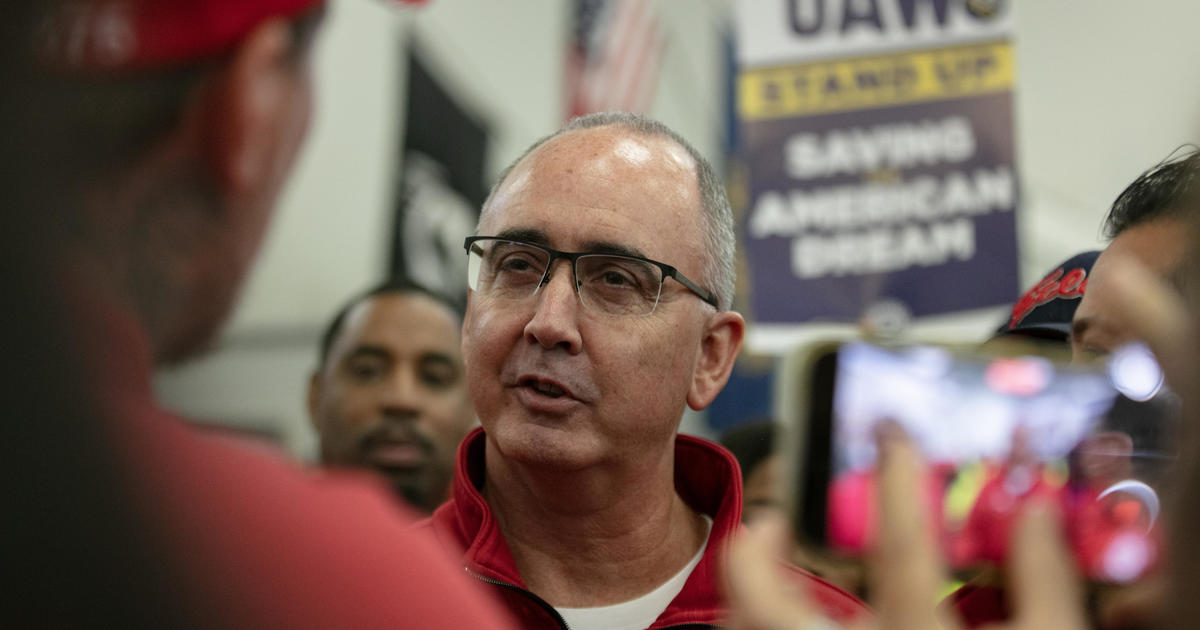Study: MLB Pitchers Don't Regain Performance Level After Tommy John Surgery
DETROIT (WWJ) - It's a big procedure that major league pitchers sometimes undergo, but does Tommy John surgery actually improve player performance or make it worse?
Henry Ford researchers analyzed pitching stats for 168 MLB pitchers before and after getting Tommy John surgery, a procedure that replaces a ligament in the elbow with a tendon from the same arm or from the hamstring -- and what they found was "quite surprising."
"Professional pitchers get back to the major leagues 87 percent of the time in our study," Rob Keller, the study's co-author, told WWJ's Sean Lee. "What we found though was that professional pitchers don't get back to their previous statistical performance. They actually get statistically a little bit worst after undergoing the surgery."
Specifically, Keller said the study found diminishing returns in three major pitching categories: Earned runs average (ERA), walks and hits per inning pitched (WHIP) and innings pitched (IP). The findings show that: ERA increased 4.15 to 4.74, WHIP increased 1.40 to 1.48, and IP declined 59 to 50.
Keller said the study debunks the perception that Tommy John surgery will make players better, and is the first to show a link between the surgery and declining pitching performance at the professional level. He said the findings have important implications, especially for parents of college and high school athletes.
"With public perception of this surgery being a wonder surgery, there's a lot of young players that come into our offices and ask, 'Is this something that I should have done to make me a better player?' And coaches ask us all the time about the surgery," he said. "So, if they see a bunch of these pitchers out there that have had the surgery, they think, 'Well, what if my kid has it without even injuring his elbow? Is it going to get him to that next level to become a professional pitcher?' When actually, these players were very good before they were injured and they statistically don't get back to that level."
Tommy John surgery, named after the former Los Angeles Dodgers pitcher who underwent the pioneering surgery 40 years ago, has been since performed on legions of pitchers at the professional and collegiate levels. In medicine it is known as ulnar collateral ligament (UCL) reconstruction. During the two-hour outpatient procedure, the ulnar collateral ligament in the medial elbow is replaced with a tendon from the same arm or from the hamstring area.
Until Henry Ford's observational study, other research had shown that a high percentage of players returned to the same level of performance after UCL reconstruction, and the perception among players, coaches and parents was that UCL reconstruction would even lead to a higher level of performance. In the only other study involving just MLB pitchers (68 pitchers), 82 percent of them returned to the mound after surgery and had no significant decline in performance.
The 168 pitchers used in this study pitched in major league games after undergoing UCL reconstruction between 1982 and 2010. Data collected included the year of surgery, pitchers' age, years of MLB experience, height/weight, body mass index, pitching arm injured, pitching role and pitching statistics. This was then averaged for the three years of pitching before UCL reconstruction and for the three years after returning to play.
For comparison, researchers collected similar data of 178 MLB pitchers in a control group with no prior UCL reconstruction and age-matched them with a corresponding UCL reconstruction pitcher. Performance was determined using three years of statistics before their "index year" (their roster year of either 2004 or 2005) and three years after their "index year."
The study found:
• UCL pitchers were "statistically better" than the control group in ERA, WHIP, IP and win percentage in the three years and two years before surgery.
• In the year before surgery, UCL pitchers' performance declined significantly.
• After surgery, the control group was either superior in nearly every performance measure or no difference observed.
• A predictor of surgery is MLB experience. Sixty percent of pitchers required UCL reconstruction within their first five years in the MLB.
While the cause of UCL injury is not fully known, orthopedic specialists theorize it's due to overuse and stress on the elbow, pitching velocity and joint motion.



